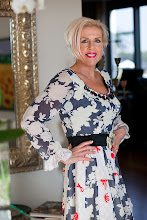
The market for quirky modern furniture and home accessories has rapidly become a focus of attention for art aficionados and professional investors alike. Gareth Williams, the curator of the V&A’s Telling Tales exhibition says, “Suddenly almost every object conceived within a spirit of enquiry and experiment can be passed off as ‘design art’, even if it barely registers any fundamental test of design (functionality, for example, or appropriate use of resources) …within a few years, an entirely new ‘design art’ market has arisen as an adjunct to the mainstream market for contemporary art, fed by the rivers of corporate and personal wealth that course through art.”
I’d agree that, just because something is a little bit unusual and different from the norm, doesn’t necessarily mean that it’s of any more value. Beauty is in the eye of the beholder and prices in the art market can fluctuate dramatically, according to popular demand and personal taste. When an artist becomes a ‘celebrity’ things can get completely out of hand – as in the case of Damien Hirst, where, in my opinion, the media hype far outweighs the talent involved and the actual worth of the pieces being sold.
I’m curious to know if ‘design art’ is headed in the same direction as the financial markets. How can one possibly know what’s worth buying? How can these sorts of items be accurately valued? When is the right time to invest: now, later, or never at all? Based on my own experience and intution, I’ve devised some sensible suggestions for how to decide on whether or not to invest in a piece of arty designer furniture:
Firstly, there are practical considerations that you should take into account, for instance, can you actually use the item in question and roughly how much might the piece have cost to make in terms of materials and labour? Is the piece unique, or one of a limited edition? What is the quality of the craftsmanship? If you’re buying to sell, then do you have evidence of the highest (and lowest) price that someone else is likely to pay for this sort of work? Be realistic, what if there’s financial Armageddon – is your purchase really practical, strong, built to last …or could it be recycled to create something useful like a barbeque or some firewood?
Do also bear in mind that the purchase of creative design is best made as an investment in your own personal wellbeing (after all, you’re the one who’ll be sharing space with your purchase) – and, of course, it’s also an investment in the talent pool of the design art market (so a form of patronage). Other subjective considerations worth making before you buy are:
What is the value of the ‘design’ to you – do you actually like it and could you live with it in your home for the rest of your life? Does it fit in with the style of your home, the rest of your furniture, or other key pieces in your collection? What does the piece ‘mean’ to you – is there an emotional reason as to why you are drawn to this particular item, does it hold memories, suggest a story or have a special significance?
By the way, at ShopCurious, we’ve some beautifully hand crafted, eco-friendly furniture, made by young designer, Ali Chapkin - inspired by her travels in Mexico. To my eye, the natural materials, the bold, earthy colours and curved lines are aesthetically appealing – plus, these are all practical, usable items. What’s more, they're the sort of pieces that I feel would look good in many types of setting: from modern apartments and modernist homes to ski chalets, holiday villas and cutting edge bars.
As to whether or not these will prove to be a good investment, well that’s up to you to decide …so let the buyer beware.
Will you?
dropshipper
3 years ago







No comments:
Post a Comment